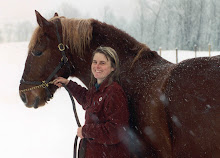


Blackbirds are flying in the fog. It is fog that I see now out of the eastern windows, as I wake, reluctantly, to my 4:59 am alarm. It’s set at that time so that I can boast of waking before 5 am. Really, there’s a routine involved, of shedding layers of warm covers, of undraping myself from my husband’s warm grasp, of dodging the cat’s paws on my wiggling toes, wiggling to take flight from this resting place, as the blackbirds have done.
There is no greater thrill for me than to wake to the sound of bird song in March. From now until the 19th of July, the birds will sing, announcing their willingness to take on familial duties. Many of us don’t feel the absence of bird song in July since fecundity is at the cusp of excess when it comes to gardens or carefully tended livestock, but the subtle changes of late summer and senescence have truly begun by then, at least here in Central Vermont.
Outside, the blackbirds are puffing up their red wing bar feathers, practicing for the return of the females, who make the journey fully three weeks later, counting on their prospective mates to set up household and procure territories that are bountiful with provisions for the summer of family rearing. When they finally do return, there is a bit of a free for all, as the birds are not monogamous, and the most flamboyant, most impressive males with the best territories are chosen first by the females.
In our hoophouses that were erected two years ago, everything is in order. Shannon has weeded the east house twice, carefully covering the crops that Kyle planted last fall with Remay. It’s a magic cover that warms the soil as much as 10 degrees more, and inside the hoophouse that can translate to 35 degrees, even when it’s 23 degrees Fahrenheit outside. There is spinach, arugula, radishes, Chinese cabbage, spring onions, and carrots all started and growing. We have been eating greens since the middle of February, and we made it through the winter buying just 6 heads of lettuce.
In the bottom picture, you can see the established greens from September in the middle. The lettuce that Shannon planted is on either side. These plants were started from seed in our heated greenhouse.
In the picture to the right, you can see the radishes planted between the rows of lettuce transplants. The carrots are planted underneath the radishes. The radishes will be harvested at about three weeks, just as the carrots begin to germinate and begin to compete for space. The lettuce will be harvested as heads become ready at about the same time as the radishes. A cherry tomato plant will be planted in some of these newly vacant spaces, about two feet apart from each other. Basil plants will flank the tomatoes, and the planting cycle will be complete. At the end of the season, the house will rest over the winter, and early the next spring, it will be used to grow just greens. We rotate the tomatoes from one house to another in an effort to cut down on pests that prey on tomatoes. Some people winter their chickens in the unheated houses to scratch up and remove the larvae that lay just under the surface of the soil. As long as there is plenty of fresh water, the chickens do well in these unheated houses. The added light from all sides will allow more productive egg laying; a chicken’s pituitary gland reacts to diminished light by decreasing their egg production.
Today it was gloriously warm- in the 60s! I put a blanket and a pillow in Bradford’s plastic sled and lay outside in the sun, listening to birdsong. Soon, the sheep will be on pasture, and wild leeks and stinging nettles will add to our table’s bounty. Tonight, we dine on mixed greens- arugula, red mustard, leaf lettuce, cress and kale shoots. The main fair is what I’m really excited about- real Boston Baked Beans from our own Bird’s Egg Beans that we harvested in the fall and Shannon and Whit have been shucking since January. Only 50 or 60 pounds left to go…
In the top picture, you can see that the aisle ways have been mulched with hay. Between the rows of lettuce heads, spring bunching onions have been planted.
Boston Baked Beans
1 small smoked ham hock, about 1 ½ pounds
2 cups dry beans, such as Navy or Pinto (or Bird’s Egg, Cranberry or Goose beans)
1 tablespoon dry mustard
1 cup dark real maple syrup, grade B or C
½ cup dark molasses
Salt and pepper to taste
4 garlic cloves, slivered
Cook the beans until tender, but not mushy. Drain and reserve the bean cooking liquid.
Preheat the oven to 325 degrees Fahrenheit.
Mix all other ingredients except the ham hock together with the beans. Add enough of the reserved bean liquid to make the beans soupy. Put the ham hock in a cast iron Dutch oven or bean pot and pour the beans around it.
Bake the beans for four hours; checking occasionally to see that the liquid has not all evaporated (add more if needed). The beans will be done when the meat flakes off of the bone. Shred it into the beans, remove the bone, fat and cartilage and serve with fresh greens and pickled vegetables like beets or dilly beans.

